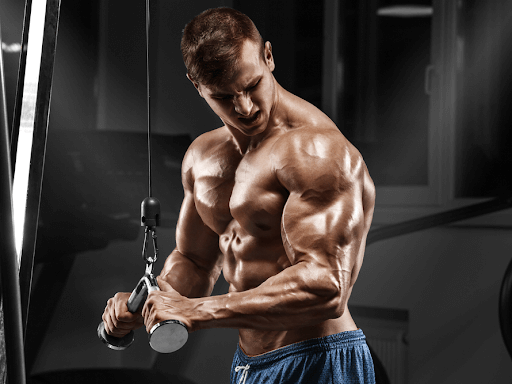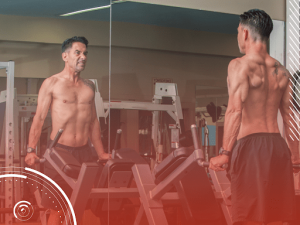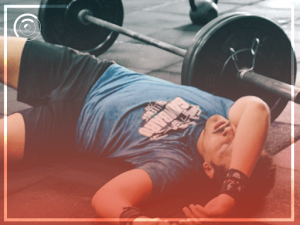Three ways to get the most out of any chest workout

Chest training is a favorite for many people, and particularly for men. The chest is one of the first places people look when judging male physiques. A sizable chest is an attractive physical feature, and is a pretty good indicator of a person’s general strength level. In fact, more often than not, men will gauge one another’s overall strength level solely on the basis of how much weight they can bench press. If you’re a male who has been involved in weight training, my guess is that you’ve asked people – and been asked by people – “How much can you bench?” far more than you’ve been asked how much weight you can squat, or how many pull-ups you can do.
Unfortunately, that’s where one of the problems with chest training comes into play. Because bench press is often the be-all-end-all exercise for many men – as opposed to deadlifts, pullups or t-bar rows – we often become desperate to showcase impressive feats of strength and brag about how much weight we are able to bench. As a result of this, men will often sacrifice form, efficiency, and opportunities for significant muscle growth simply for the sake of being able to brag about how much weight we can press from a flat-back position.
Obviously, the ultimate goal of resistance training for the chest is to build strength in that region while simultaneously crafting a good-looking set of pectoral muscles. Therefore, here are three important tips that can help you maximize your time while also minimizing your opportunities for injury, as long as you exercise intelligently and don’t let your ego get in the way.

Know what is supposed to be happening
When you train your chest, the one thing you should be concentrating on above all others is filling your chest cavity with blood so that the muscle pumps to the utmost degree. The amount of weight you use is important, but if your goal is to maximize muscle growth, the quantity of weight you’re lifting isn’t nearly as significant as achieving a proper pump in your muscles.
One of the reasons people frequently train their chests incorrectly by using too much weight and improper form is because they have a flawed understanding of when and how muscle growth takes place within the chest. Always remember, your muscles do not grow while you’re working them; they actually grow while they’re resting and you’re feeding them following a workout.
Whenever you develop a muscle, what you’re doing is microtearing it. In principle, this functions the same way it would if you tore your ankle. A torn ankle swells and fills with blood because the body is sending blood to the ankle in order to heal it. When we microtear our muscles, the blood rushes to that area to heal it, thereby creating the pump we’re all familiar with. The feeling of soreness you experience the day after a hard chest workout is because of the microtears in your pectoral muscles. The process of resting the muscle and getting the proper nutrients repairs the muscles and allows them to rebuild themselves even stronger so that they can better handle the stress you just placed on them.
In short, the way you create a large chest is to safely put as much stress on your entire chest as you possibly can, and then give your body a chance to recover from that exertion, because that’s how the muscles grow.

Get a full range of motion
To thoroughly train your chest, you should start by using a chest press machine with a design that allows for a natural arc in the lifting motion. Because the chest muscles are built in an arc formation, following an arc-shaped lifting path is the key to achieving a full stretch in the chest throughout a full range of motion. While you’re doing the exercise, your shoulders should never come forward. Instead of allowing your shoulders to drift forward, make sure you completely open your chest first by sticking it out. This creates a full stretch in the pectoral region, and it guarantees that you’ll get the most out of the movement when you then contract your chest muscles and press the weight forward.
As you concentrate on your form and on moving through a full range of motion, you should be sure to engage your pec-delt tie ins, which are the muscles that link your chest and shoulders together. Engaging the muscles in this area and being sure to pull and press the weight from this part of your anatomy feels different from simply moving the weight using your arms, and the overall difference it makes in your physique is substantial.
When I perform chest flys on a machine, I go so far as to place a barrier between myself and the machine to make sure I can get a full range of motion. This ensures that I can maximize the muscle size, capacity and density. It also ensures that I build the muscle at the very start of the repetition and all the way along the pectorals as the movement reaches its completion.

Stay in sync with what your body is doing
Just because the weight is moving doesn’t mean the right body part is doing the work. This is especially true when it comes to training your chest, so make sure you stay completely locked in mentally, and in sync with your body, in order to get the most out of your chest training.
For example, whenever you use the pec deck, you don’t want to think about pushing against the weight from your hands or forearms. Instead, you should concentrate on pushing your elbow into the pad. If the forearm does the pushing, then the pressure goes directly into the elbow joint, which is the weakest point. In addition, by pressing from the forearm instead of from the elbow, you’ll minimize the amount of work the chest is doing, and transfer some of the workload into the shoulders. Remember, the goal is to efficiently train the chest by maximizing the activation level of every single muscle fiber, not to move the maximum amount of weight by any means necessary.
You also want to be careful not to use repetitions that are too quick. If you’re relying on momentum to float the weight through the full range of motion, you are not getting all of the chest-building benefits out of performing the exercise.
Remember, the pectoral muscles always need to be doing the work, and when you are lifting a weight that is clearly too heavy for you, you start trying to recruit muscles from other parts of the body. If you find that you need to recruit other muscle groups to get the weight up, this is a sign that you actually need to reduce the weight and maintain your form. Otherwise, injury is inevitable, whether it happens immediately or later on in the training process.
I hope this explanation of chest-training efficiency has been beneficial to you. For more great fitness tips, feel free to check out the rest of the blog at RonWilliamsFitness.com, and also the Ron Williams channel on YouTube!


